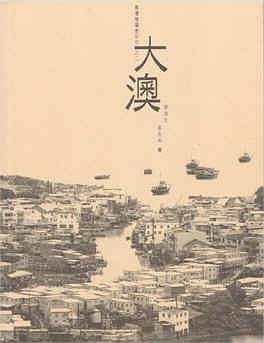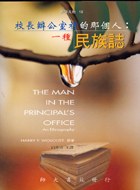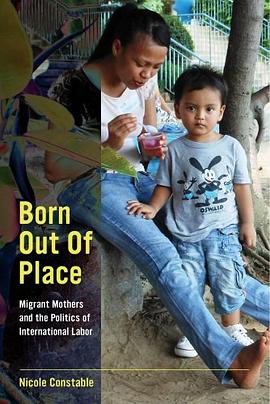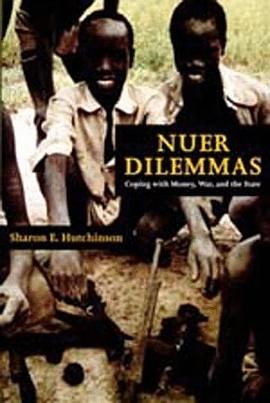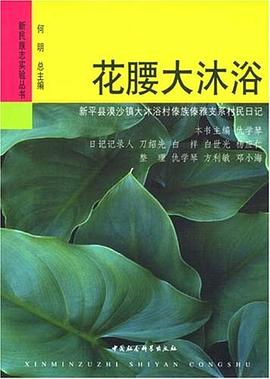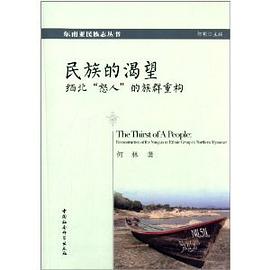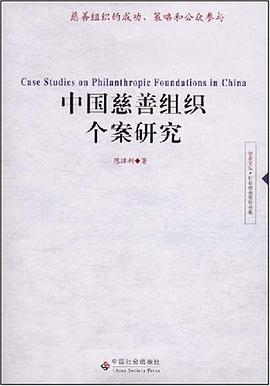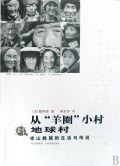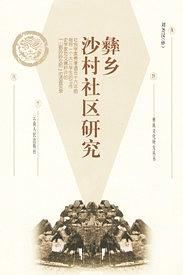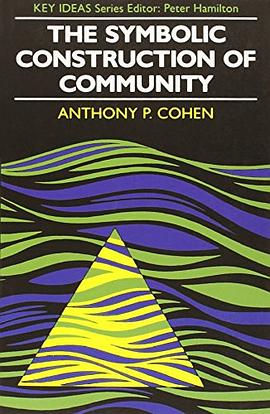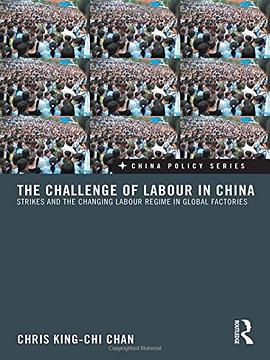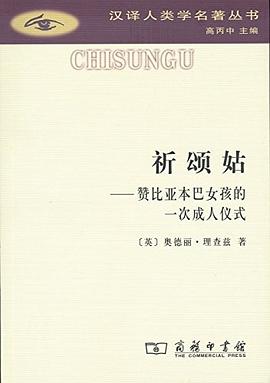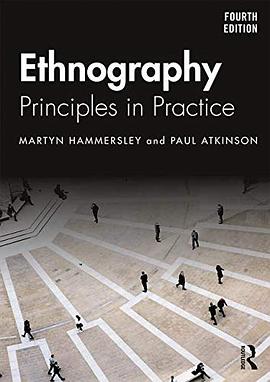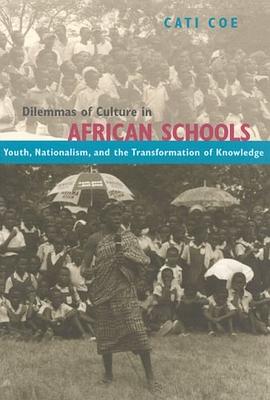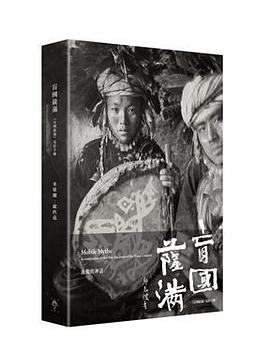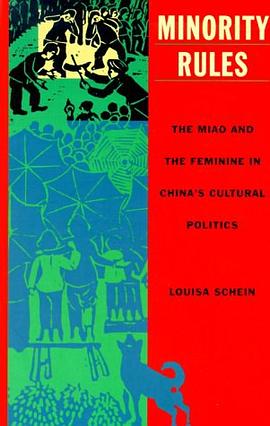
Minority Rules pdf epub mobi txt 電子書 下載2025
Louisa Schein, Associate Professor of Anthropology at the University of Rutgers, She received her PhD from UC Berkeley.
- 人類學
- Anthropology
- 西南
- 田野調查
- 海外中國研究
- 民族問題
- china
- 苗族

Louisa Schein’s study of cultural production in post-Mao China begins and ends with the Miao, one of China's 56 officially designated minority nationalities. As she points out in her introduction, however, “this book is about China as much as it is about the Miao” (p. 2). Indeed, this book is very much about the complementary and indispensable relation that each bears to the other.
Schein's focus is on cultural production, and much of the text consists of a close examination of representation practices through which “Miao” has emerged as a historical and ethnic identity. The Miao live scattered across seven provinces in southwestern China and four southeast Asian nations, speak dozens of mutually unintelligible dialects and refer to themselves with a variety of names, although “Miao” is not among them. Nevertheless, Miao, originally a derogative imposed by outsiders, has become an official standard and an accepted self-description.
Schein begins by sketching the continuous but unequal relationship between Miao and Han from the late imperial period through the 1990s. Over this period, the Miao have been brought under increasingly tight political, economic, and cultural control by the Chinese state. This trajectory of political and cultural power is reflected in a series of discourses and practices through which the Miao have been constructed as Other. In the 19th century, the Miao were depicted as exotic, dangerous, and promiscuous in popular picture albums. During the Republican period, the Miao were pressured to assimilate, often enduring humiliation and physical coercion. After 1949, a sincere effort to account for ethnic diversity within the new nation-state was first interrupted by the Great Leap Forward and then effectively negated by the conformist pressures of the Cultural Revolution. In the post-Mao era, as markets have overtaken mass movements and top-down policy declarations, new opportunities as well as challenges to Miao cultural agency have emerged.
After the founding of the People's Republic in 1949, China's new leaders sought to realize the state as “a social order of national multiethnicity” (p. 73). Transforming newly fixed ethnic categories into functioning social and political units relied, in part, on the work of young minority men and women who were recruited into training schools called “Nationalities Institutes.” Some were groomed as political cadres and sent back to their communities; those with appropriate talents were trained as artists and performers. Schein's poignant profiles of aging members of this cohort provide valuable insight into the personal and collective struggle entailed in interpreting and accommodating unpredictable shifts in state policy and economic conditions. Once in great demand for their value in promulgating the message of ethnic unity and socialist development, these now-faded stars were highly skilled and well-trained performers. As state-sponsored cultural professionals, they developed highly stylized, sanitized repertoires that combined such elements of traditional Miao culture as courtship songs and shamanic dances with the techniques and aesthetics of ballet and other Western art forms.
With the advent of the post-Mao economic reforms, however, these stylized representations were rejected as artificial and inauthentic by both Chinese consumers and global markets. Although the most successful performers still enjoyed the prestige and privilege of an elite status in their adopted urban milieu, most found themselves eclipsed by rough-hewn rural troupes who were better able to satisfy the fantasies of urban Chinese consumers and foreign tourists.
The marketization of ethnic images entailed the emergence of new forms of exploitation as well as new opportunities for cultural agency. Schein's descriptions make it clear that neither trend dominates the current process. For instance, the commodification of authentic, ethnic, female Miao bodies certainly serves to reify ethnic and gender relationships, reproducing the asymmetries of power among Han and Miao, male and female. Many Miao women are distressed by the indignity of being subject to the yearning, idealizing, and sometimes sexualizing gaze of the consumer. Yet in the interactions between some Miao women and male Han tourists, officials, and other expectant consumers of exotic, Miao femininity, Schein discerns creative attempts to reclaim individual and collective agency. In one of the most insightful passages in the book, she describes how some young Miao women respond to these potentially exploitative situations. When recruited by Han photographers to appear in traditional festival garb, some opt out entirely, whereas others have become habituated to the point that they are able to manipulate the procedure and dictate the terms of remuneration (p. 211). In one case, young women made their own arrangement to sing privately for an amateur Han folklorist, defying (and ultimately drawing a reprimand from) their elders. Here, Schein shows that Miao women have been able to subvert both the expectations of their own communities and the “urban gaze” of Han tourists. By taking control of the commodification process, their actions transcend mere resistance to domination.
In Minority Rules, Louisa Schein skillfully combines theoretical debate with detailed and engaging description in a work that is as intellectually insightful as it is ethnographically informative. As a study of the Miao and of the dialectics of gender, power, and representation in the post-Mao era, Schein's book is an important addition to the ethnography of the minority peoples of southwestern China and should interest all anthropologists of contemporary China. Yet this work ultimately deserves a broader audience; this is a significant contribution to the theory of cultural production.
具體描述
讀後感
我对书的印象是作者怎么老是跑来跑去的,用这里一张照片,那里一幅油画,到旅游点去碰到几个汉族游客说了几句,参加了几个短暂的活动/仪式,然后就拿来做实证素材了。我不反对这些可以作为材料,但除了一些零碎的仪式过程,在这本书里基本看不到更细致的任何一个苗寨村子或人家...
評分2004年秋季某天,邢老师给过我一篇“中国的社会性别与内部东方主义”,我第一次看到沙因这个名字,也第一次见到“内部东方主义”这种说法。05年搬家的时候,我把复印的文章搞丢了,08年我找到了原文刊载的《社会性别与发展文集》,自己又印了这篇文章。10上半年邢老师去世,下...
評分我对书的印象是作者怎么老是跑来跑去的,用这里一张照片,那里一幅油画,到旅游点去碰到几个汉族游客说了几句,参加了几个短暂的活动/仪式,然后就拿来做实证素材了。我不反对这些可以作为材料,但除了一些零碎的仪式过程,在这本书里基本看不到更细致的任何一个苗寨村子或人家...
評分我对书的印象是作者怎么老是跑来跑去的,用这里一张照片,那里一幅油画,到旅游点去碰到几个汉族游客说了几句,参加了几个短暂的活动/仪式,然后就拿来做实证素材了。我不反对这些可以作为材料,但除了一些零碎的仪式过程,在这本书里基本看不到更细致的任何一个苗寨村子或人家...
評分2004年秋季某天,邢老师给过我一篇“中国的社会性别与内部东方主义”,我第一次看到沙因这个名字,也第一次见到“内部东方主义”这种说法。05年搬家的时候,我把复印的文章搞丢了,08年我找到了原文刊载的《社会性别与发展文集》,自己又印了这篇文章。10上半年邢老师去世,下...
用戶評價
culture is a pursuit of our total perfection by means of getting to know, on all matters which most concern us, the best which has been thought and said in the world.
评分因為上課不得不又重讀一遍,理論過於駁雜,民族誌部分不滿意,一度懷疑她所謂的itinerant ethnography和大量對於民族節日錶演的描述隻是因為沒有更in-depth的材料。少數民族身份的構建對於不瞭解中國國情的學者或許新鮮,可惜也隻限於此。
评分文筆很好。見解很imposing。當然引發的爭論也很多。
评分culture is a pursuit of our total perfection by means of getting to know, on all matters which most concern us, the best which has been thought and said in the world.
评分GOVT 6827 Culture的題還是用Ethnography好,不過Schein的理論用得有些過,選材可能摻雜瞭不應該的主觀因素。
相關圖書
本站所有內容均為互聯網搜索引擎提供的公開搜索信息,本站不存儲任何數據與內容,任何內容與數據均與本站無關,如有需要請聯繫相關搜索引擎包括但不限於百度,google,bing,sogou 等
© 2025 qciss.net All Rights Reserved. 小哈圖書下載中心 版权所有


